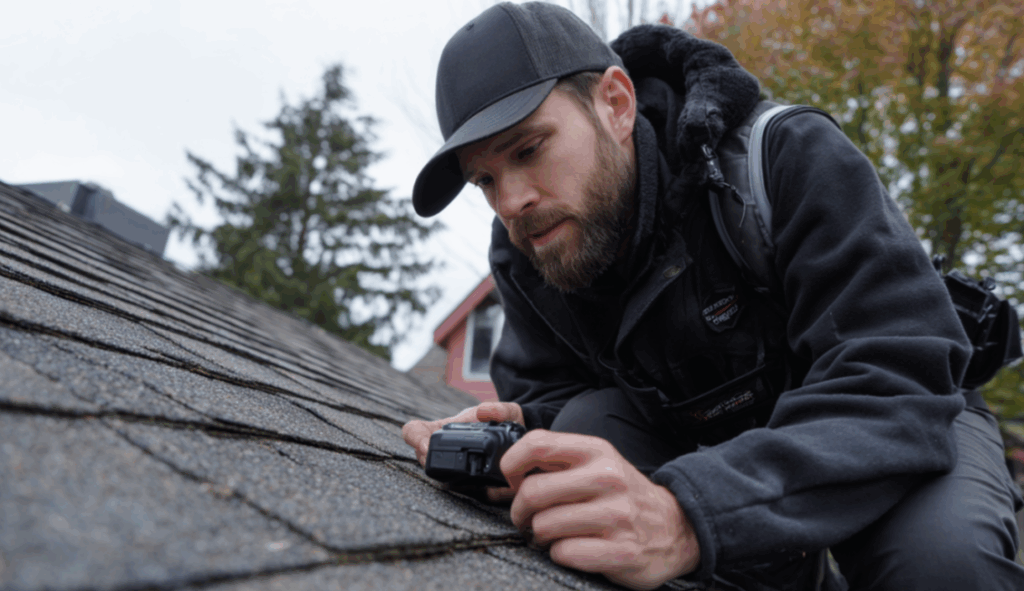Your roof is one of the most important parts of your home—it shields your family, belongings, and the very structure itself from rain, snow, wind, and sun. Yet when it comes time to check for wear and tear, many homeowners are tempted to take matters into their own hands. A DIY inspection may seem like a money-saving solution, but the truth is: your roof is far more complicated than it appears.
Even the most detail-oriented homeowner can miss subtle signs of damage. And the cost of overlooking a problem? Leaks, mold, rot, and potentially thousands of dollars in repairs that could have been avoided with early detection.
In this blog, we’ll explore why DIY inspections often fall short, the key issues homeowners miss, and how professional roof inspections protect your investment.
The Hidden Risks of a DIY Roof Inspection
At first glance, inspecting your roof seems straightforward. Climb a ladder, check for loose shingles, peek into the attic for leaks—done, right? Not quite. Roof systems are complex networks of shingles, flashing, underlayment, decking, ventilation, and gutters, all working together to keep water out.
When you attempt a DIY inspection, you face two major risks:
- Safety hazards – Walking on a roof without proper training or equipment puts you at risk of falls or injuries.
- Missed warning signs – Many roofing problems are subtle and invisible to the untrained eye. What looks like a minor issue today can lead to costly damage tomorrow.
The result is often false confidence: believing your roof is in great shape, only to discover water damage after a heavy storm.
What You Might Miss During a DIY Roof Inspection
Here are some of the most common problems homeowners overlook:
- Subtle shingle damage
Small cracks, curling, or granule loss can be nearly impossible to see from the ground—but they’re telltale signs of aging. - Hidden leaks
Water intrusion often starts silently, seeping into insulation or framing long before visible stains appear inside. - Flashing issues
Around chimneys, skylights, and vents, flashing provides a critical barrier. Loose, rusted, or improperly sealed flashing is one of the most common sources of leaks. - Ventilation problems
Proper airflow prevents heat buildup in summer and ice dams in winter. Without professional insight, ventilation concerns often go unnoticed. - Structural concerns
Soft spots, sagging areas, or uneven surfaces on your roof deck are red flags that most homeowners simply don’t know to look for. - Gutter and drainage blockages
Gutters do more than move water—they protect the roof edge and foundation. Clogged or damaged systems can force water back under shingles.
Missing these issues doesn’t just put your roof at risk—it jeopardizes your entire home.
Why Professional Roof Inspections Are Worth It
Professional inspections go far beyond a quick once-over. Trained roofers bring years of experience and specialized equipment to detect issues homeowners would never spot on their own.
A professional inspection provides:
- Comprehensive analysis – Every layer of your roof system is evaluated, from shingles to attic ventilation.
- Early detection – Small problems are flagged before they escalate into emergencies.
- Detailed reporting – You’ll get a clear picture of your roof’s condition and recommended next steps.
- Safety assurance – Professionals are trained to work at heights safely, reducing risks to you.
Think of a roof inspection like an annual physical for your home. You may feel healthy, but without a professional check-up, you won’t know if there’s a silent issue brewing beneath the surface.
Supporting Your Roof Between Inspections
While professional inspections should be scheduled annually—or immediately after severe weather—you can still play a role in maintaining your roof’s health. Here are safe, actionable steps you can take:
- Keep gutters clean to prevent water back-up.
- Trim trees to stop branches from scraping shingles or dropping debris.
- Inspect your attic for dampness, mold, or sunlight peeking through.
- Check after storms for shingle debris or damage visible from the ground.
- Monitor ceiling stains or musty odors, which may indicate hidden leaks.
These small habits don’t replace a professional inspection, but they help you catch early warning signs that it’s time to call in an expert.
The Cost of Waiting Too Long
One of the biggest pain points for homeowners is cost. It’s natural to think, “If I don’t see anything wrong, why pay for an inspection?” Unfortunately, roofing damage rarely announces itself right away. By the time water spots appear on your ceiling, the damage behind the scenes can already be extensive.
What might have been a $200 repair can quickly snowball into thousands of dollars in structural repairs, mold remediation, or even full roof replacement. Investing in professional inspections actually saves money in the long run by extending the lifespan of your roof and preventing expensive surprises.
The Bottom Line
DIY roof inspections may feel convenient, but they leave too much to chance. Your roof is too important to risk on guesswork. Hidden damage, unseen leaks, and ventilation problems can all compromise your home’s safety and value if overlooked.
That’s why partnering with trusted professionals is the smart choice. At A-1 Contractors in Great Falls, we offer thorough, expert roof inspections designed to give you peace of mind. Our team doesn’t just look at the surface—we dig deep to uncover hidden problems and provide solutions that protect your home for years to come.
Don’t wait until the next storm reveals a costly surprise. Contact A-1 Contractors in Great Falls today for your expert roof inspection.
 (406) 453-7000
(406) 453-7000

